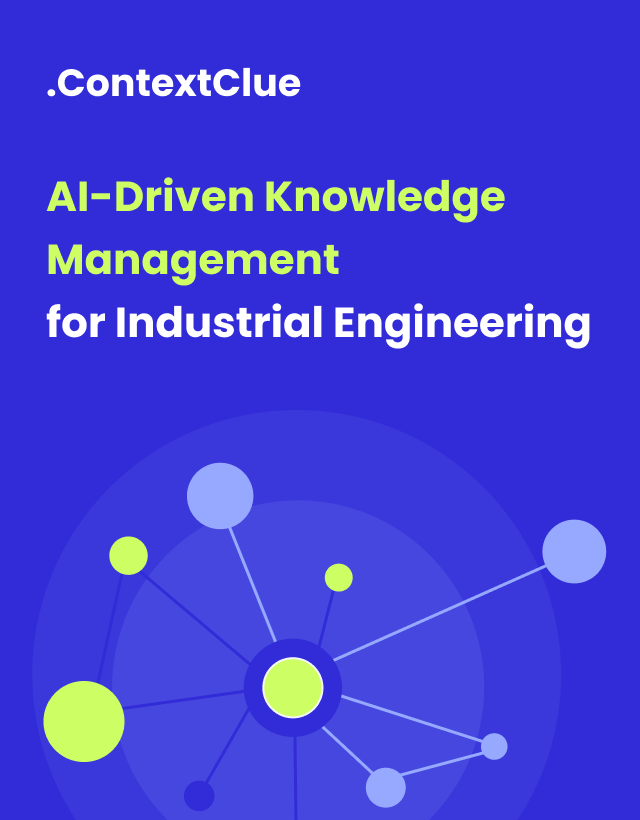
April 29, 2024
Databricks Strategy for Maximizing Efficiency: Optimizing Techniques for Users
Author:

CSO & Co-Founder
Reading time:
12 minutes
In today’s data-driven world, organizations are constantly looking for innovative solutions to harness the power of big data. One such solution that has emerged as a game changer is Databricks, a unified and powerful analytics platform built on Apache Spark. [1] This platform combines data engineering, Artificial Intelligence (AI), machine learning (ML), and streaming capabilities to help organizations come up with an effective data strategy.
This post will provide:
- An in-depth review of what Databricks is
- The key features of this tool
- Strategies for maximizing efficiency on the Databricks platform
Understanding Databricks strategy
Databricks is a unified analytics platform built on Apache Spark that is designed to simplify data engineering and data science workflows. It provides a collaborative workspace where data engineers, data scientists, and analysts can work together seamlessly while leveraging the power of Spark’s distributed computing engine.

Read more: Data Engineering with Databricks

At its core, Databricks offers a unified environment for data processing, analytics, and machine learning, eliminating the need for organizations to manage multiple disparate tools and platforms. It provides native integrations with popular data sources and storage systems, enabling users to ingest, process, and analyze data from a variety of sources with ease.
That said, Databricks offers a robust set of features that cater to various aspects of the data lifecycle, from engineering and processing to analysis and collaboration.
Here are some of Databricks’ key features:
Unified data analytics platform
One of the best things about Databricks is that it provides a unified data analytics platform for various disciplines, including data science, data engineering, and business analytics. This eliminates the need to use multiple tools for different stages of the data lifecycle. Within Databricks’ unified platform, users can carry out data ingestion, transformation, analysis, and visualization tasks. This helps improve workflow efficiency and fosters cross-functional collaboration between different teams.
Scalability and performance
Databricks is built on Apache Spark, a powerful open-source framework renowned for its ability to handle massive datasets. This translates to exceptional scalability and performance. With Databricks, users can easily scale their data processing and analytics tasks based on workload demands. This ensures optimal resource utilization for both large-scale and small-scale data processing workloads.
Ease of use
Despite its powerful capabilities, Databricks is ideally designed to be user-friendly, catering to users with varying levels of technical expertise. [2] The platform’s intuitive interface, visual tools, and interactive notebooks provide a simple approach for data scientists and analysts to build a data strategy, write code, and visualize results. Databricks also offers collaborative features that allow users to share and collaborate on various projects, thus fostering a culture of knowledge sharing and innovation.
Advanced analytics capabilities for your Databricks strategy
Databricks goes beyond basic data processing and offers a rich set of features for advanced analytics. This includes capabilities for deep learning, streaming analytics, and real-time data processing.
Most importantly, Databricks integrates seamlessly with popular machine learning libraries like TensorFlow and PyTorch, allowing data scientists to leverage cutting-edge techniques for various tasks. Thanks to these advanced analytics capabilities, organizations can derive valuable insights and make informed data-driven decisions.
Managed services and automated infrastructure management
One of the significant advantages of Databricks is its managed services. Unlike traditional Spark deployments, Databricks takes care of infrastructure setup, maintenance, and upgrades. This eliminates the burden of managing complex infrastructure and allows users to focus only on their data analysis tasks.
Databricks also offers automated infrastructure management features like auto-scaling, which automatically adjusts cluster resources based on workload demands. This helps reduce operational overheads and ensures that Databricks is always up-to-date with the latest features and improvements.
Data security & compliance
Like most data platforms, Databricks prioritizes data security and compliance. The platform comes with robust security features like access control, allowing administrators to define user permissions and restrict access to sensitive data.
Databricks also offers data encryption at rest and in transit to ensure the security of your data within the platform. Furthermore, Databricks adheres to industry-standard compliance certifications, giving organizations peace of mind when it comes to data privacy and security.

Read more: Databricks for Business: Use Cases

Databricks data strategy for maximizing efficiency
Databricks offers a flexible environment for building an effective data strategy. However, ensuring your workloads run smoothly and efficiently requires strategic planning.
Here are some of the best strategies for maximizing efficiency in Databricks:
Avoid over-partitioning
Partitioning data is a common technique for improving query performance in large datasets. [3] However, excessive partitioning can have the opposite effect. Having too many partitions with small files usually results in bad query performance in the Databricks environment. On the other hand, not over-partitioning ensures efficient data management within your clusters and makes data processing tasks more efficient.
In that case, users are advised to strike a balance between over-partitioning and partitioning. This will help optimize query performance without introducing unnecessary overhead.
File size tuning
The size of your data files can significantly impact processing speed. Therefore, you need to consider file size tuning to optimize for your specific workload. Smaller files might be faster to read for certain operations, but they can also lead to more overhead expenses due to increased metadata management.
Conversely, very large files can improve processing efficiency for bulk operations but might be slower for scans or targeted queries. This is why you need to analyze your workload and data access patterns to determine the optimal file size for your use case.
Use serverless architectures
Consider using serverless architectures for specific workloads within your Databricks environment. Serverless functions offered by cloud providers like AWS Lambda or Azure Functions automatically allocate resources based on execution needs. This eliminates the need to manage clusters entirely, making it ideal for short-lived, stateless tasks like data transformation or simple API calls. [4]
That said, evaluating your workloads can help you identify opportunities to leverage serverless architectures for the cost-effective execution of specific tasks within your Databricks pipeline.
Leverage auto-scaling for efficient resource allocation
Databricks clusters can dynamically adjust their size based on workload demands. This prevents overprovisioning, where you pay for idle resources, and under-provisioning, which leads to slow job execution.
Auto-scaling allows clusters to adapt, scaling up during peak processing times and scaling down during idle periods. This approach strikes a balance between performance and cost-effectiveness.

Read more: Implementing MLOps with Databricks

Utilize photon with Databricks Lakehouse
Photon is basically Databrick’s next-generation engine ideally designed to enhance the performance of data processing and analytics workloads. Using photon optimizes Databricks Lakehouse’s performance by improving resource utilization. This is particularly beneficial for workloads involving large datasets or distributed computations where efficient communication is critical.
Use parallel computation where suitable
Apache Spark, the engine powering Databricks, excels at parallel processing. You can leverage Spark’s capabilities by structuring your jobs to exploit this feature. This can involve splitting large datasets into smaller partitions and processing them concurrently across multiple cores in your cluster. Evaluating your workload for opportunities to parallelize tasks can significantly improve execution speed.
Use large clusters for complex workloads
While auto-scaling is valuable for dynamic workloads, some complex tasks might benefit from using larger clusters. This can be particularly true for jobs involving heavy data shuffling or complex joins. Having sufficient resources upfront can prevent bottlenecks and improve overall processing speed. However, it’s important to balance resource allocation with cost considerations.
Use native Spark operations
Spark offers a rich set of optimized operations for data manipulation and analysis. By utilizing native Spark operations within your code, you leverage the built-in efficiency of the Spark framework. This can significantly outperform custom implementations or operations not optimized for Spark.
Understand your hardware and workload type
Different hardware configurations offer varying levels of performance for specific workloads. Consider factors like CPU cores, memory (RAM), and disk storage (HDD or SSD) when choosing instance types for your clusters.
CPU-intensive tasks benefit from instances with high core counts, while memory-intensive workloads require ample RAM. Aligning hardware with workload type ensures optimal resource utilization and processing speed.
Use caching on Databrick lakehouse
Frequently used data or intermediate results from jobs can be cached within clusters. This eliminates the need for repeated data retrieval, accelerating subsequent jobs that depend on the cached data. Caching data on Databricks Lakehouse is important due to the following reasons:
- Improved Query Performance
Caching frequently accessed data minimizes the need to read data repeatedly from different remote storage systems. As a result, this translates to faster query execution and better use of available resources. - Reduced Latency
Since data is stored closer to the compute nodes, the total amount of time taken to access it is reduced. This leads to lower latency and improved user experience. - Enhanced Iterative Workloads
Most machine learning and data science workloads often involve iterative algorithms. Therefore, caching data helps reduce the amount of time needed to read data for each iteration.
Use compaction in your data strategy
Over time, data files can become fragmented, leading to slower query performance. Regularly compacting data files optimizes storage and improves query speeds. Delta Lake, a powerful storage format available within Databricks, automatically compacts data, ensuring optimal storage efficiency and query performance.
Use data skipping with Databricks lakehouse
Delta Lake supports data skipping. This allows Databricks to leverage statistics and metadata to skip unnecessary information during queries. Doing so avoids excess reads, reduces the amount of data processed, and improves Databricks Lakehouse’s overall performance. Data skipping is particularly beneficial for historical data analysis or scenarios involving frequent updates to existing datasets.
Run the analysis table to gather statistics
Spark, the engine powering Databricks, relies on table statistics to optimize query performance. Regularly running the analyze table command on your Delta Lake tables allows Spark to gather statistics about the data distribution, key statistics like minimum and maximum values, and the number of null values within each column. [5] This information is crucial for Spark to choose the most efficient execution plan for your queries.
Identify bottlenecks
Bottlenecks are basically areas in your workload that may negatively affect the overall performance of the Databricks platform once the load in production increases. Identifying and addressing all bottlenecks in good time goes a long way in optimizing the performance of your Databricks environment.
Final thoughts
By implementing the above optimization strategies, you can streamline workflow, minimize processing times, and ensure your Databricks environment operates at peak performance. From autoscaling to utilizing serverless architectures, these data strategies will help you tackle your biggest data science and engineering challenges with efficiency and cost-effectiveness.
Ultimately, embracing optimization and leveraging the extensive capabilities of Databricks is the key to harnessing the power of big data and accelerating innovation in today’s data-driven business environment.
FAQ: Modern Databricks Optimization, Costs, and Comparison
What are optimization techniques in Databricks?
-
Correct partitioning (not too many/small or too few/large partitions).
-
Optimal file size tuning aligned with query patterns.
-
Using serverless/cloud-native features for stateless workloads.
-
Enabling auto-scaling to avoid idle or overtaxed clusters.
-
Using Photon for faster SQL and DataFrame operations.
-
Leveraging Spark-native operations and parallel computation.
-
Utilizing caching for frequently used/intermediate data.
-
Regularly compacting data files (Delta Lake) for performance.
-
Employing data skipping to reduce unnecessary reads.
-
Running analyze table to generate detailed statistics for Spark’s query optimizer.
-
Monitoring and removing bottlenecks as data and job complexity grow.
How does Databricks Photon impact platform optimization and performance?
Photon is Databricks’ high-performance vectorized query engine. It dramatically speeds up SQL and DataFrame workloads by more efficiently utilizing hardware (CPUs/GPUs), optimizing in-memory operations, and reducing compute costs per query. Photon is especially beneficial for larger datasets, data warehousing, and mixed analytical workloads.
What is predictive optimization in Databricks?
Predictive optimization refers to automatically tuning and scheduling resources or workflows in anticipation of data volume spikes or changing query loads. In Databricks, this often involves auto-scaling, workload scheduling, and advanced Spark optimizations that leverage ML or heuristics to allocate resources dynamically.
What is the weakness of Databricks?
-
Steep learning curve for non-engineers (compared to pure SQL tools).
-
Variable, sometimes unpredictable costs due to usage-based pricing.
-
Can be complex to monitor and tune for optimal performance, especially at scale.
-
Less ideal for users seeking purely no-code/low-code BI tools.
-
May require significant Spark or distributed systems expertise for full optimization.
How can you estimate Databricks costs?
Costs are calculated based on Databricks Units (DBU) consumed, cluster types/sizes, and processing time. Use the Databricks cost calculator for estimates, factor in storage costs, and monitor usage regularly. Tagging and Overwatch (cost monitoring tools) can help track and allocate costs per department, project, or workload.
How can right-sizing clusters cut Databricks costs?
Choosing an appropriately sized cluster prevents overspending on idle resources and under-provisioning, which leads to slow jobs. Auto-scaling clusters up (when needed) and down (during low activity), selecting correct node types, and optimizing configurations aligns resource usage to workload, lowering costs without sacrificing speed.
What are the cost differences when comparing Databricks with its main competitors?
-
Databricks typically charges for cluster uptime and DBUs, offering fine-grained scaling.
-
Snowflake, for instance, uses per-second usage for compute credits, which can be more cost-efficient for analytics workloads with sporadic demand, but less flexible for complex ML or custom ETL.
-
Databricks is often more cost-efficient for large, complex workloads or when custom ML/AI is central, due to open integration, control, and performance.
-
Competitors like Snowflake provide easier, predictable pricing models for pure SQL analytics and BI workloads, but may lack Databricks’ flexibility for advanced data science.
How does instance type selection impact Databricks costs?
Instance type (CPU, memory, storage) directly affects both performance and cost per hour. High-core or high-memory instances run big jobs faster but cost more per hour. Matching your job type (CPU-bound, memory-bound, I/O-heavy) to the right instance type enables you to use fewer resources for less time—cutting costs overall while maintaining performance.
References
[1] Spark.apache.org. Unified engine for large-scale data analytics. URL: https://spark.apache.org/ ,Accessed on April 19th 2024
[2] Databricks.com. Databricks concepts. URL: https://tiny.pl/dwl64. Accessed on April 19th 2024
[3] Medium.com. Why and How: Partitioning in Databricks. URL: https://tiny.pl/dwl68. Accessed on April 19th, 2024
[4]Medium. com. Databricks serverless SQL: better scaling, Improved productivity, and Simplified operations. URL:
https://medium.com/@ps.dhoni/databricks-serverless-sql-better-scaling-improved-productivity-and-simplified-operations-2e5e56de9516. Accessed on April 19th, 2024
[5] Databricks.com. Analyze Table. URL: https://docs.databricks.com/en/sql/language-manual/sql-ref-syntax-aux-analyze-table.html. Accessed on April 19th 2024
Category:






